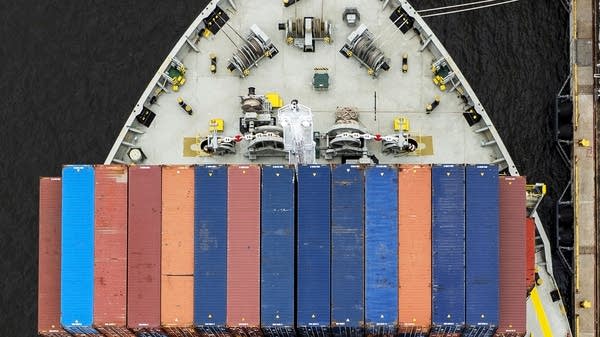Workers who built Baltimore’s Key Bridge reflect on its reach in their lives
The ironworkers, painters and others who constructed the bridge thought it would outlive them.

The Francis Scott Key Bridge in Baltimore was built over the course of five years, beginning in 1972. For the workers involved, it meant overtime pay and a chance to prove themselves on a giant construction project that would go on to become an icon of Baltimore. The bridge cost $110 million to build in the ’70s, which translates to about $500 million in today’s dollars.
Now, a few weeks after its collapse, those workers reflect on what many considered to be a monument to their work.
At the Sea Horse Inn just north of the collapsed Key Bridge, 79-year-old retired ironworker Butch Henry goes behind the bar to pour himself a cup of coffee. He takes it black, just like he did when he was getting up early to build the bridge.
The job meant going up hundreds of feet in the air to bolt together pieces of steel. “The work was beautiful. It was the biggest job in town,” he said.

Henry lost several teeth while working on the bridge when a bolt hit him in the mouth. Still, he said the money was good — enough that he was able to take his family on vacations to the Jersey shore.
After his time as an ironworker, Henry did roadwork, including filling potholes, just like the men who died while working on the bridge when it collapsed. He gets tears in his eyes when he talks about it.
“It was unbelievable. I didn’t think anything could bring that bridge down,” said Henry.
It also shocked one of his fellow ironworkers, 75-year-old Buddy Cefalu. “It’s like, this can’t be real,” he said.
Cefalu added that he felt deflated, then angry, even helpless: “Having stood atop that steel, having helped to build that bridge with my two hands and back.”
It was satisfying but backbreaking work. (Cefalu has had four lumbar surgeries.) But as a young man, the job was also a stepping stone to higher positions in the union.

“Maybe two old timers would be looking at a guy in the union hall and say, ‘That kid worked on The Key Bridge. Man, he really got around good,’ meaning climb iron and just be good up top on the steel,” he said.
Not everyone who worked on the bridge liked all aspects of the project. Panagis Galiatsatos’ father, Jerry, painted the metal beams on the Key Bridge.
“He hated heights. And this wasn’t just heights, it was heights over water,” he said.
Still, after working on the bridge, Galiatsatos, a Greek immigrant, was able to move his family of four out of a one-bedroom apartment and buy a Baltimore row home.
When the bridge collapsed, Galiatsatos said his dad — who now has early onset dementia — looked like he lost a friend.
“It’s the same look he always had whenever he read a union letter saying ‘Someone else has passed away. We’re collecting funds.’ It’s like ‘I remember that guy,'” said Panagis Galiatsatos.
For him, the bridge was a reminder of the work his dad did.
“My dad’s 83. You know, I don’t have many more years I’ll have with him. So it was always good to kind of be able to know pieces of him will always be here because of these buildings, right?” he said. “I know even when he’s gone, if I drive somewhere, I can be like, ‘My dad painted that.’”
Galiatsatos said the bridge was a symbol of the work his dad and other tradespeople did, on a structure they built to serve others — and one they thought would outlive them.














